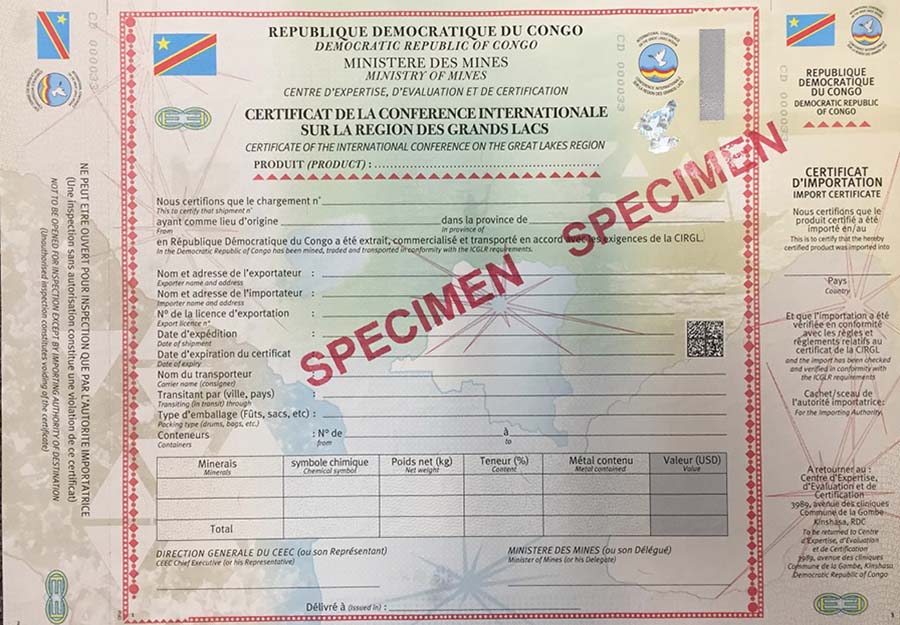The ICGLR mining site inspection and certification standards are designed to ensure that designated minerals come only from sites that are conflict-free and that meet minimum social standards (eg: no children labor). The standards for assessing mining sites and the steps to promote improvements or otherwise sever ties with unacceptable mining sites are in accordance with the procedures and standards presented in the OCDE Due Diligence Guide.
Under the ICGLR mechanism, mining sites are inspected annually by a government mine inspector. These government inspections are subject to cross-verification by means of independent third-party audits by an auditor approved by the ICGLR. Ongoing risk assessments are carried out by the Office of the Independent Auditor of the Chaîne des Minerais. Mining Sites are classified into one of three categories:
- Certified (Green Rating) - the mine meets all standards (ie no conflict, no child labor); the mine can produce minerals certified for export.
- Yellow Rating - violation of one or more important criteria; the mine operator has three months to resolve the problem. The mine can produce minerals for certified export.
- Non-Certified (Red Rating) - serious offense against at least one critical criterion; the mine is not allowed to produce minerals for at least six months; the mine retains its red rating until a subsequent inspection shows that the breaches of the criteria identified have been resolved.
Certification and Export Procedures
The ICGLR Certificate serves as an assurance to buyers that a shipment of minerals is free from conflict and that it meets all other ICGLR standards. Member State governments must review each export of designated material, including supporting documentation regarding the chain of custody and the mine of origin, before issuing a certificate.
Regional monitoring of minerals through an ICGLR Database
One of the main pillars of the ICGLR certification mechanism is the monitoring of regional mineral flows through a public ICGLR mineral tracking database. Monitoring and reconciling mineral flows within and between Member States will ensure, for all stakeholders (governments of Member States, local and international NGOs, end users in the private sector and others) the integrity of certified mineral flows from the region. The database will make it possible to monitor and reconcile the production, purchases and exports of exporters, mines, mining regions and Member States. The ICGLR Secretariat is responsible for the development and implementation of the regional mineral monitoring database. Member States, mines, traders, processors, exporters and other actors in the mineral chain will be required to provide all data (except price information, which remains confidential) on their production, purchases , their sales and exports to the ICGLR Secretariat, when the latter so requests. The ICGLR database will be accessible to the public in order to ensure and preserve the credibility of the ICGLR Ore Monitoring and Certification Mechanism.
The Situation in Congo
The ICGLR Mechanism Certificate in the Democratic Republic of Congo is issued by the C.E.E.C which controls, tests and certifies minerals. To track down the authenticity of our ICGLR Certificates:
The format

ICGLR Certificate Application
The international Conference on Great Lakes Region Certificate is delivered and remains valid for a period of 1 to 3 months depending on the case. For online application follow the link: